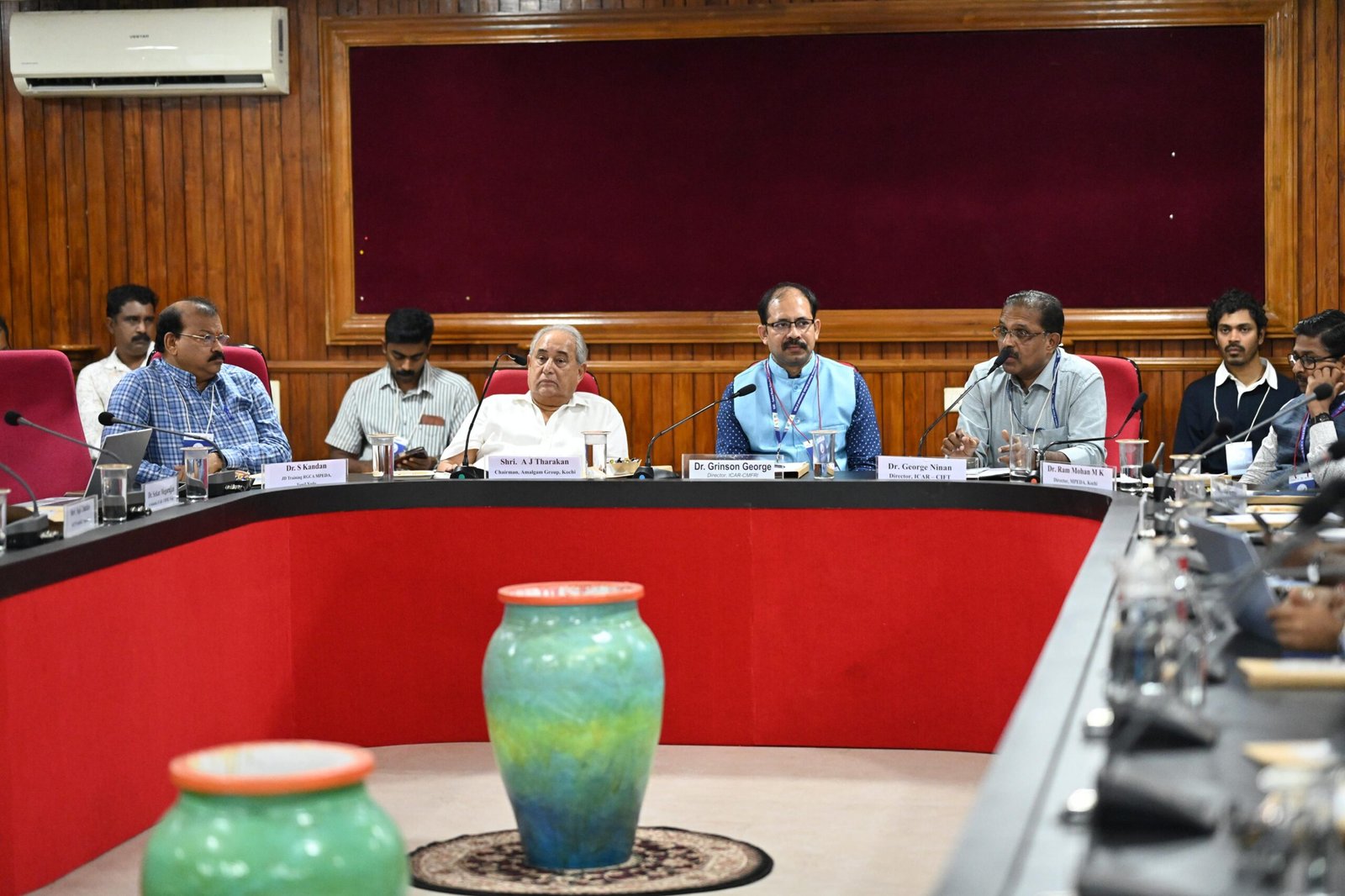Thursday, 13 November 2025

India’s seafood export sector is facing a major setback following the recent US tariff, prompting strong calls from industry leaders and policymakers for urgent market diversification, enhanced value addition, and technology-driven innovation to sustain the country’s seafood trade.
This concern took centre stage at the Industry Meet held on the sidelines of the fourth International Symposium on Marine Ecosystems (MECOS 4) at ICAR-Central Marine Fisheries Research Institute (CMFRI).
With shipments to its largest export destination declining sharply, stakeholders in the seafood production sector called for urgent steps to diversify export markets and enhance value addition to safeguard the sector from major losses.
According to Dr Ram Mohan, Director of Director of the Marine Products Export Development Authority (MPEDA), while exports to the United States — India’s largest seafood market — declined by nearly 6 per cent during April–September 2025, shipments to China, Vietnam and Thailand recorded sharp growth, signalling a shift in trade dynamics towards Asian markets. “Combined with anti-dumping and countervailing duties, the effective tariff now stands at 58.26 per cent, severely denting India’s competitiveness in its top export destination”, he said.
“A robust technology-driven startup ecosystem in the fisheries sector is very much required, integrating the efforts of researchers, technologists, industry, and policymakers to drive innovation and value addition”, said Dr George Ninan, Director of ICAR-Central Institute of Fisheries Technology (CIFT).
To revive the sector, the meet recommended focusing on re-processing and producing high-value products to fetch more export revenue.
Industry leaders stressed that India must move beyond exporting bulk raw seafood and tap into the vast potential for diversified value addition — ranging from breaded squid rings and surimi products to a wide variety of ready-to-eat seafood fillets.
The meet observed that India’s current value-added seafood exports stand at 742 million US dollars, far behind major competitors like China, Thailand, Vietnam, Ecuador, and Indonesia. It also recommended declaring exclusive aquaculture zones and fast-tracking Free Trade Agreements (FTAs) to regain competitiveness in global markets.
“The US has long been India’s biggest market for shrimp exports, which constitute the bulk of the country’s seafood trade. However, the new tariff regime, coupled with sustainability and traceability challenges has disrupted trade flows and affected export earnings”, said A J Tharakan of Seafood Exporters Association of India.
CMFRI Director Dr Grinson George said that the concerns raised by various stakeholders — including fish producers, exporters, and feed manufacturers — will be systematically documented and incorporated into a comprehensive roadmap to be prepared as part of the MECOS deliberations.
Industry representatives from seafood export, shrimp production, fish meal production, aqua feeds, adventure sports and coastal ecotourism, along with fish farmers and fishermen representatives spoke at the meet.
Dr Joe K Kizhakudan coordinated the Industry Meet.